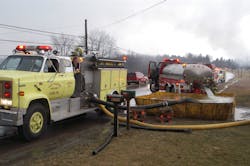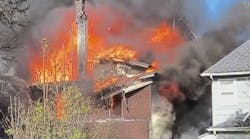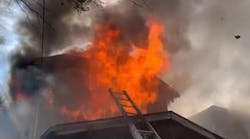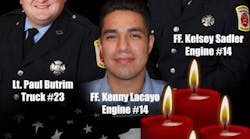Many years ago, I had the privilege of working on the lesson plan for the New York State Water Supply program. During that time, I learned much about rural water supply in general and tankers and tenders in particular. Some of what was learned was completely by accident.
Fill & dump rates
The NFPA standard for tankers/tenders states that these apparatus must be capable of being filled at a rate of 1,000 gpm and must be able to be emptied or dumped at the same rate of 1,000 gpm, at a minimum. How can you check your tanker/tender to ensure this kind of performance? Well, it is pretty easy. If you have a 3,000-gpm tanker/tender and a watch, then you just have to time it. If you can fill and dump the apparatus within 3 minutes or less, than you’ve met the standard.
But how do you know if all of the water is being emptied when you arrive at the dumpsite? The fact is that you do not know unless you check it. As we were piloting the State Water Supply Course, we stumbled onto a very real problem. We found tankers/tenders that were only capable of dumping 87 percent, 84 percent and, yes, we found one apparatus that was only dumping 71 percent of the water contained in the tank. What does that mean in a practical application? If you have a 3,000-gallon tanker/tender and it is only dumping 71 percent of the water, then the apparatus is only capable of delivering 2,130 gallons of water and you are constantly transporting the same 870 gallons of water over the road. There are many reasons that this might be occurring, including problems with the baffles or the sumps, or perhaps the tank design or an engineering mistake.
How can you check to make sure that your 3,000-gallon tanker/tender is actually dumping 3,000 gallons of water? First, make sure that the apparatus tank is completely full. Next, take the vehicle and get it weighed. Then dump all the water that you can and weigh the truck again. Water weighs 8.34 pounds per gallon, so if you have a 3,000-gallon tank, then the apparatus must weigh 25,020 pounds less than the initial weight.
Check the weight
As we have said in the past, before you take delivery and pay for any new fire apparatus, you must fill the vehicle with all equipment and fluids and weigh it, as outlined in NFPA 1911 Section 16.2.3. If it is at all overweight, then you cannot accept the vehicle until the manufacturer comes up with a remedy. If there is not a remedy, then you simply do not buy the vehicle.
With new tanker/tenders, it is extremely important that the apparatus is delivered to you completely empty and with all the equipment and a full tank of fuel. This is when and how to weigh the vehicle. You then need to fill the water tank and weigh it again, and then dump the water tank and weigh it again. Two items you can now check off your delivery acceptance list—that the vehicle is not overweight and that the vehicle is dumping the rated capacity of the tank.
As you are filling and dumping the tank, it is advisable as part of the acceptance testing to time it to make sure that the apparatus can meet the NFPA standard of dumping and loading at a rate of at least 1,000 gpm.
Get what you paid for
Many fire departments are not doing any kind of acceptance testing upon delivery. This is a big mistake. The NFPA standard has acceptance requirements for all kinds of apparatus. If you find that you have a 1,500-gpm pump that, upon delivery, cannot deliver that required flow, then you can send the unit back to the manufacturer and the unit can be fixed under warranty. However, if you wait until the first in-service pump testing, the unit may be out of warranty and the fire department may have to pay for any repairs. The key here is to make sure you are getting what you paid for.






